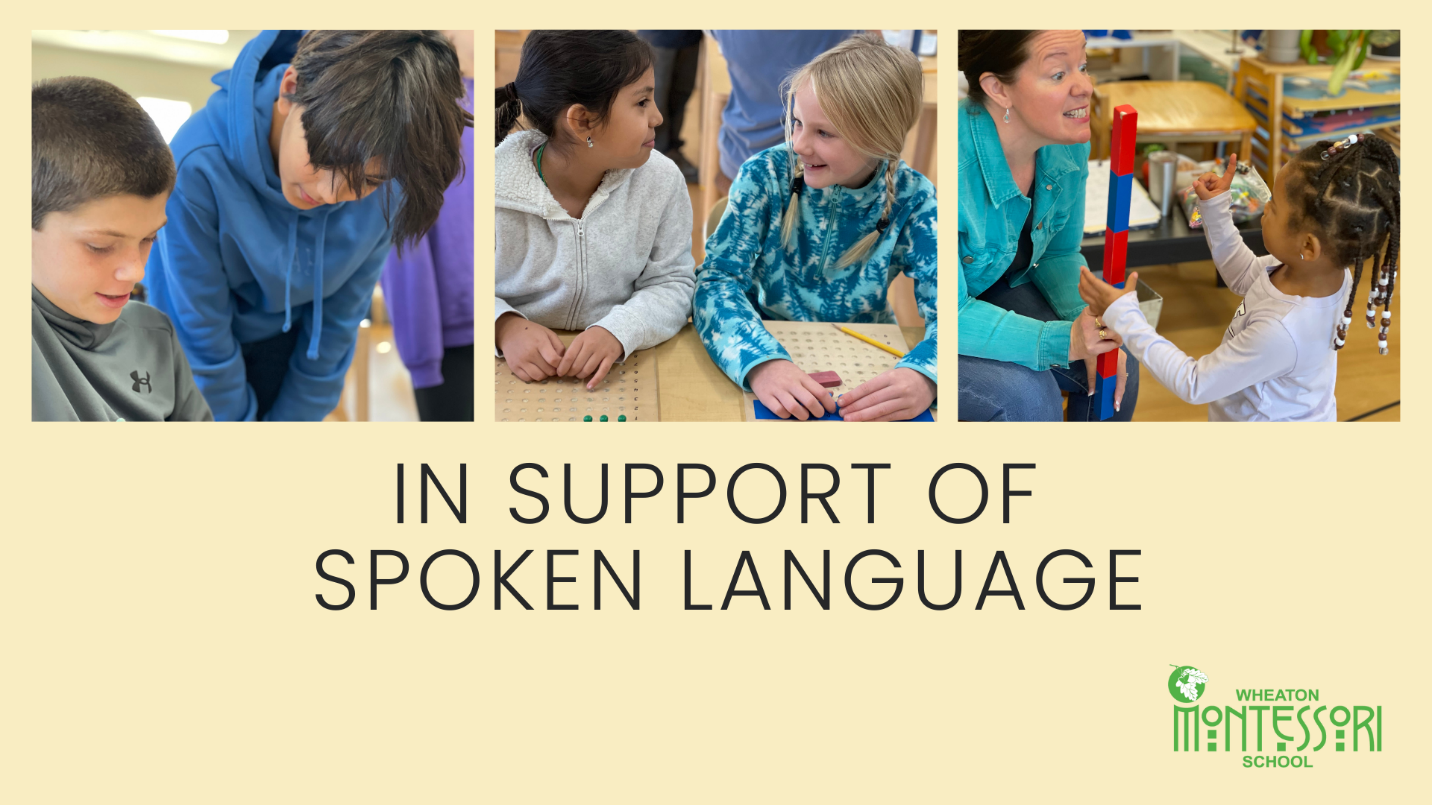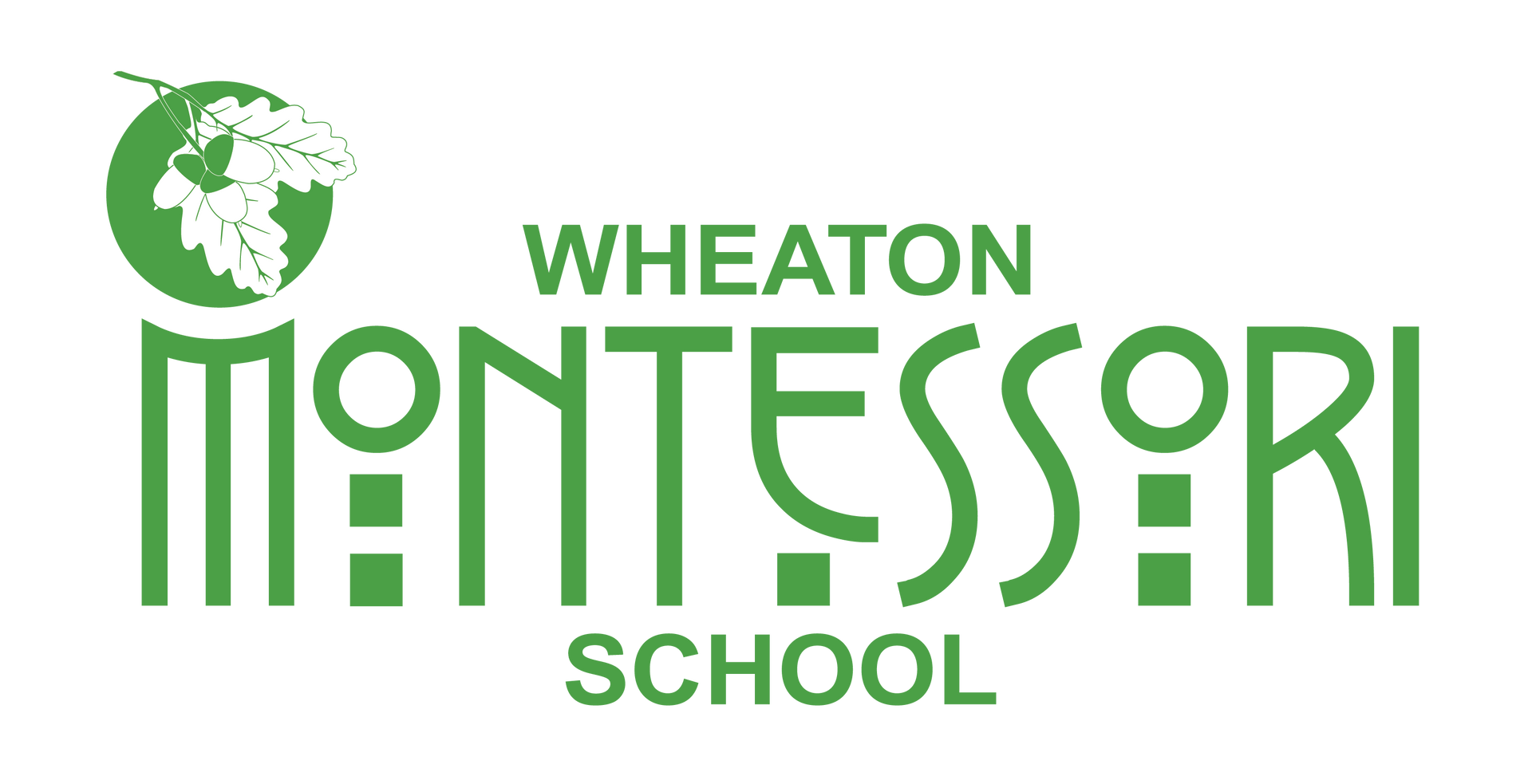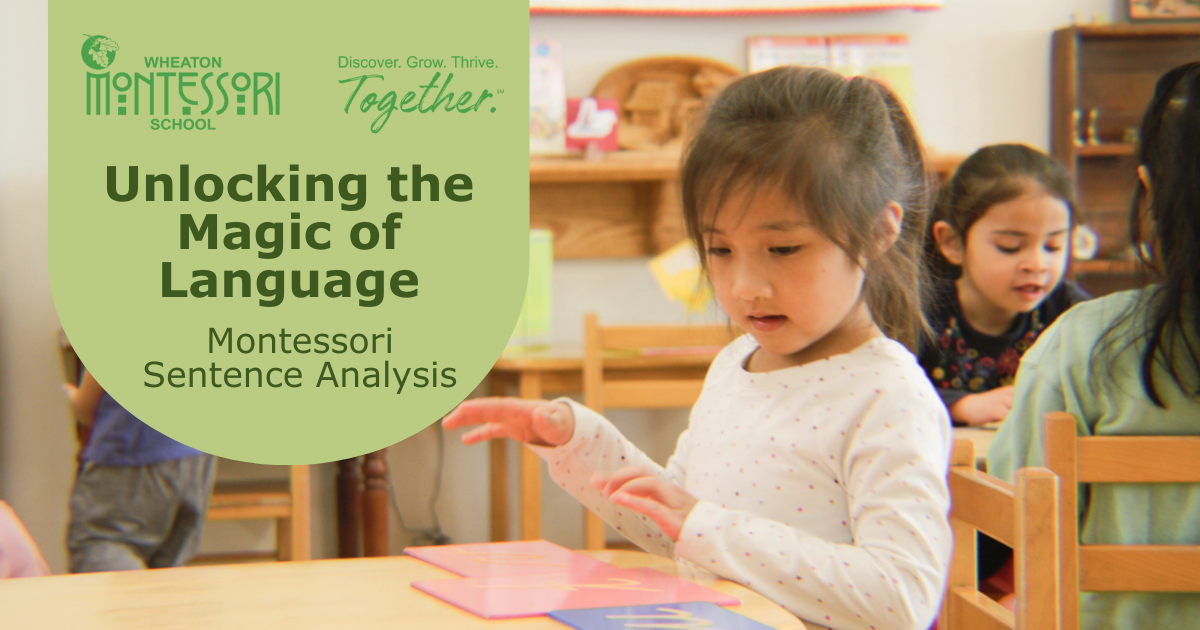
Our children’s early years are essential for developing strong language skills. At Wheaton Montessori School, we pay particular attention to how we support young children’s receptive and expressive language development.
The exercises we use to enhance children’s spoken language development are often games and conversations. Our highly trained professionals integrate these activities as a prominent part of children’s day. This blog shares conversational games you can play at home and explains our favorite spoken language games based on your questions from Parent Discovery Night.
The Purpose
Young children are expanding their vocabulary at an astonishing rate: from recognition of about 50 words at age one to 1,000 words by age three, to at least 10,000 words by age five! We know that children absorb language effortlessly, so, at Wheaton Montessori School, we provide children with expansive vocabulary enrichment through a series of intentional language exercises.
We also recognize that adults are the most important language material in the classroom, so we use precise language whenever we are communicating with children. We offer rich, full, and beautiful language because we know we are providing an essential foundation for children.
Our Favorite Activities
We keep oral language alive and lively through a variety of purposeful activities.
Classified Picture Books
We choose wordless picture books that focus on a theme that is familiar to children or that are classified around a sequence (e.g., Amanda’s Day). In the classroom, we sit down with one child and take a “picture walk” through the book to help the child interpret the picture clues. The adult asks the child about what they see. This process not only helps children develop their expressive language skills but also sets the stage for future reading and story interpretation.
True Stories
When we tell true stories, we invite a group of three to five children to join us. Sometimes we use little cultural artifacts or objects as we share stories about everyday life, or we offer little snippets about geography, art, music, biology, and geometry. The key to these stories is that they are based on reality. In sharing these stories, we offer children interesting and rich language, as well as spark their interest and imagination!
The Question Game
For this activity, we gather a small group of children who have common experiences and then ask a series of questions about that event. Being mindful to solicit answers from a variety of children, we focus on asking questions that can form a sequence and illuminate details. We then summarize the story based on the children’s responses.
Because children live in the moment and often don’t remember what happened yesterday, we try to do this activity near when the experience occurs. In addition to modeling how to tell a story and how to create complete sentences from one-word answers, we are also providing preparation for creative writing by taking an event, structuring it sequentially, and highlighting details.
Conversation at a Picture
To engage children in this activity, we invite a small group to a piece of artwork on display and start a conversation about what the children observe in the picture. We focus on using “w” questions such as: What do you see? Where do you think they are? Why do you think…etc. We keep eliciting conversation by asking more questions: Do you see anything else in this area? Do you notice anything else about this scene? When the conversation begins to fade, we summarize the observations in a small narrative or story.
Reading Literature
We work to read quality children’s literature every day! When we do so, we highlight the book’s title, the author, and the illustrator. Under the age of six, children live in the present and are trying to adapt to the world around them.
Reciting Poetry
When reciting poetry, we do so from memory. We recite poems over a series of days and, just like with singing, children learn the poems by themselves and love to recite them. Children also absorb phonetic skills from any onset rhyme. Popular nursery rhymes support children’s process of learning to read!
Objects in the Environment
This activity is a series of games that follow a “listen and do” type format. After gathering a group of children, we explain that will say something to do and when a child hears their name, they get to do that action. We start with simple, one-step commands: Touch a shelf. Stand by a window. Walk around a table. We then progress both in complexity in terms of the types and categories of objects as well as by offering double commands: Find a friend and shake hands. Choose a book and place it on a table. Play a bell and hum a tune. While quite fun, these games also have the bonus of helping children develop their auditory memory.
Classified Pictures
For this work, we have collections of pictures representing categories of objects (types of transportation, furnishings, appliances, playground equipment, etc.), as well as cards with illustrations of geographical, geometrical, biological, and scientific terms (parts of a flower, land, and water forms, polygons, etc.). When doing this activity with a child, we first name the classification (“These are all fruits.”) to help establish mental order. Then we played a little game to teach the vocabulary for the items pictured on the cards.
The Sound Game
The sound game helps children become aware of the phonemes in our language. We collect ten known objects on a tray and play an I Spy type game that isolates the beginning sounds of the objects, then later the ending sounds, and eventually the sounds in the middle of the words. The whole purpose of this game is to help children become aware of the sounds that make up words.
Family Mealtime
Making family mealtimes a priority is crucial for building strong bonds and relationships. Social gatherings often revolve around food, as food brings people together. Prioritizing family mealtimes will not only provide an environment for you to bond with your family now, but it will also set a firm foundation for building positive relationships with your children as they grow to be adolescents. Our adolescent community makes meals from scratch and eats lunch together every day. While teens may not express their love for this shared experience, there are long-term benefits. If you have schedule conflicts for having dinner together, consider having weekend breakfasts or evening teatime instead. Even better, get your kids involved in meal preparation and use the opportunity to have fun conversations. Asking them about their favorite recipes will get them even more involved and proud to be part of this process.
Conclusion
Spoken language activities are the foundation for children’s receptive and expressive vocabularies. In addition to enhancing their vocabulary and providing an overarching structure for future work in writing and reading, engaging children in language games also helps increase their listening and comprehension skills. Above all, we take the time to listen to children’s spontaneous efforts to express themselves, so that they gain confidence in speaking and feel that their thoughts have meaning.
Come see (and hear!) all this spoken language work by scheduling your school tour or current parents can schedule a classroom observation. We would love to share with you what we do at Wheaton Montessori School.
Current families are invited to schedule their classroom observation by clicking the green buttons below.
If interested in enrolling in our school, "Schedule a Tour" by clicking on this link or the green button located in the upper right-hand corner of our website. We are enrolling children who will be between 2.5 and 4 for the summer and fall of 2024 and we will hold a space for enrolled students who have not quite reached 2.5.


